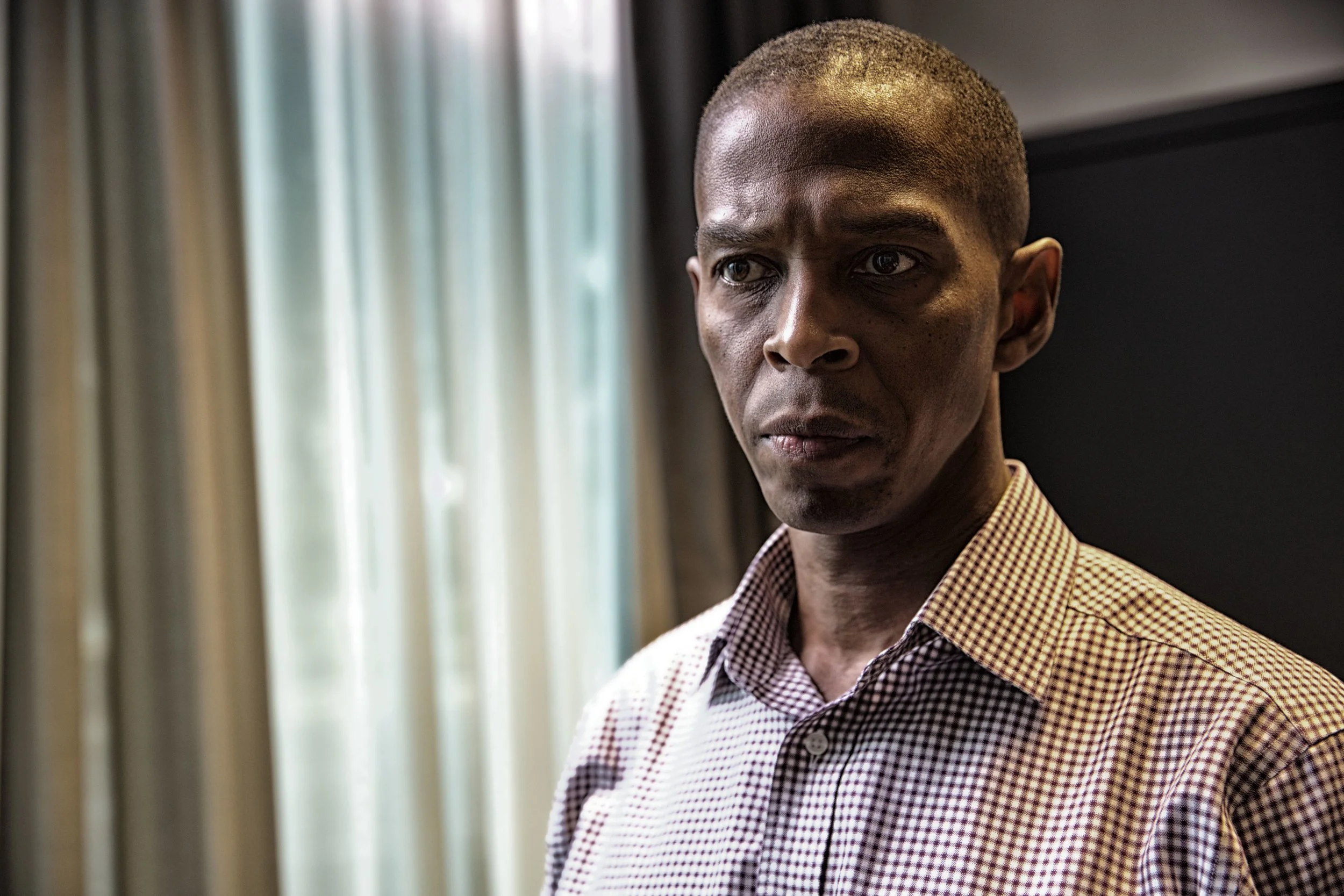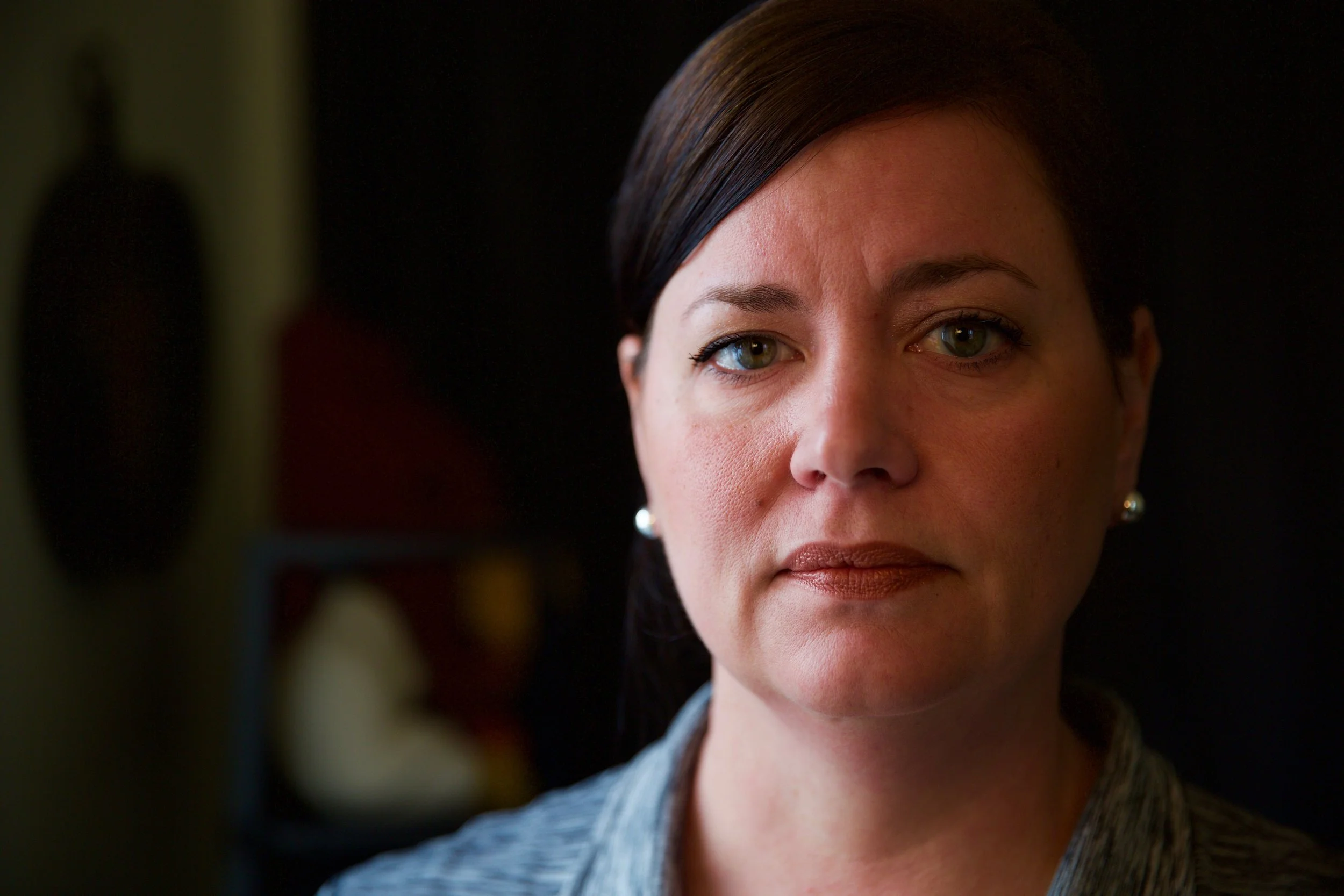Richmond Justice
STORIES + PORTRAITS
Sarah | June 17, 2016
Sarah Scarbrough, Ph.D., is the Internal Program Director for the Sheriff's Office at the Richmond City Justice Center.
Once you step foot outside of the Richmond City Justice Center, our local jail, you’re not ours any longer. That’s where city funding stops. The jail doesn’t have money to place offenders into transitional housing or treatment programs upon their release. But so many of our residents were homeless before they wound up here, and even those with housing often were living surrounded by drugs and crime. To release people into such a troubled environment would be as bad, if not worse, as sending them back to the streets. Fortunately, our sheriff gets it, and he hired me to bring a holistic vision and structure to the diverse programming we offer here, so that everything we’re doing with inmates while they are under our supervision helps to ensure that they do not return.
I started working here eight years ago, when I was studying at VCU. I did my dissertation research here, earned my Ph.D. in 2012, and joined the Justice Center staff the following year. I developed our REAL Program based on my dissertation research, and it has grown into a powerful force for reducing recidivism and rebuilding lives. But I really couldn't do any of this without my amazing staff—Shond, Jamal, Mike, Ray, Tatiana and Pastor Louis are such an integral part of everything we do.
REAL stands for Recovering from Everyday Addictive Lifestyle, and that’s a struggle facing the great majority of those incarcerated here. Of our 900 or so residents, 78% arrived at the Justice Center with substance abuse problems. That’s tough. But we know that drugs aren’t the roots of the problems that put people here. For many of them, drugs offer a way to self-medicate and seek temporary release from some very real psychological or physical pain. If we don’t address those issues and those behaviors, including but not limited to drug use, then we’re doing a disservice in our role of promoting public safety and preventing recidivism.
“The obstacles stacked against you don’t stop there, and we haven’t stopped there.”
The REAL Program offers substance abuse treatment classes as one component of broad preparation for re-entry. And it’s very individualized. For example, for each person in the program, we talk, one-on-one, about housing. Where are you going once you leave here? You don’t need housing? Tell me why. We also talk about other aspects of re-entry. You’re a veteran, so let’s talk about that. Or, you owe child support—we’re going to need make a plan. We work on the practical questions of where to go and how to pay for it, and then we make a plan.
On the day you’re released, we provide transportation to the housing you’ve identified—or, the housing we’ve set up for you. There are transitional homes in Richmond that are free to join, but they have long waiting lists and aren’t always the right fit for a particular person. Sometimes we’re able to help through a housing scholarship. We established this opportunity with funding and coordination from the Community Foundation and Homeward. The scholarship pays for the first couple of months of rent for folks coming out who will be homeless if this intervention were not put in place. But the obstacles stacked against you don’t stop there, and we haven’t stopped there.
Though we receive no city funding for re-entry services, we’ve developed a nonprofit called REAL Life that continues the re-entry preparation offered inside the Justice Center once offenders are released. It’s not intended to reinvent the wheel in re-entry, because there’s a lot of great programming already available. REAL Life aims to fill the gaps that do exist, and to make people aware of services they’re eligible to access.
So far, we’ve held two alumni meetings, including one with 40 men and women in attendance. I told my husband it was like heaven on earth, because I had seen these people incarcerated, in jumpsuits. Society has said they’re not worth a darn, they’re going to be nothing, they’re just thugs. But here they were, wearing normal clothes, looking good, smelling good, not high, healthy—and rebuilding their lives. One guy brought his paycheck and said, “I don’t mean to brag, but…” After being locked up for such a long time, he had a job as a welder making $2,500 a week! So many of our alumni stay in touch because they’re grateful for what they received while they were here and after they were released.
“You see potential in people that sometimes they do not see in themselves.”
Carlos is one of my favorite success stories. He is a college graduate, which is not typical for folks incarcerated here. Carlos got sidetracked, lost his jobs, and started selling drugs. A few bad decisions unraveled his life, landed him homeless, and then he wound up here. But he says he was “rescued, not arrested.”
Carlos enrolled in the REAL Program and embraced it fully. He took advantage of every opportunity. In fact, he was our first housing scholarship recipient. Upon his release, Carlos had no money—and the only thing he owned were the clothes he was wearing when he arrived here. We had to do something, or he would have gone right back to the same situation and unhealthy friends who surrounded him before he was incarcerated. We found a landlord who was willing to come here and have Carlos sign a lease before he completed his sentence. The landlord gave me the key. And when Carlos was released, we met him downstairs, gave him a new outfit, handed him the key, and then took him to a local thrift store to get him furniture and more clothes. We found a church willing to donate food and other items for his kitchen. It was just amazing.
And yet, Carlos had everything stacked against him. He had no money. He had to report to probation regularly, but he was living seven or eight miles away from the probation office and had no car. He looked into applying for food stamps and a free cell phone. But he is under 50, has no kids living with him, and no disabilities—so he doesn’t qualify for any of those government-funded social services. He could hardly apply for a job without a phone number, and without a job he wouldn’t have any money for food, shelter after the housing scholarship ran out, or transportation to the probation office. So, I became Carlos’s answering service. He put my number on job applications, and checked in daily when he could borrow a phone to see what I had heard.
Five weeks after he was released, after hearing no news from potential employers, Carols got five job offers within 36 hours! It was just incredible to see how his hard work paid off. Now he works full time at a Buick dealership—a job with benefits—and he has just been promoted. He works at the front desk, so he’s the face of the dealership when you walk in and he’s answering the phones. On top of this, Carlos works part-time in the evenings and on weekends at a Marriott hotel downtown. He’s trying hard to pay off his debts. He has money in savings, and he’s talking about developing a college savings plan for his daughter. He’s meeting regularly with a financial planner. He even has a girlfriend. And all of that started with the critical support we were able to offer him through REAL Life right when he needed it most.
But there’s the other side, too. We can’t provide everyone with a housing scholarship, and lots of people will return to the projects, to Section 8 housing, and while that’s a roof over their head, they’re surrounded by drugs and crime. You hate to say it, but you know that it’s only a matter of time until they return to the lifestyle there. Until our neighborhoods change, we're not going to see changes in our broader community.
Still, even for those who are released whom we fully expect to return, it’s crushing when they do. You see potential in people that sometimes they do not see in themselves. It’s very disappointing. We’ve also had a few people overdose and die after being released. For me, that’s like losing a family member. It’s very, very hard. But then there’s Carlos, and people like him. And we know that’s why we’re doing this. It doesn’t work for everybody, but it works for a lot of people.
— interviewed June 13, 2016
















